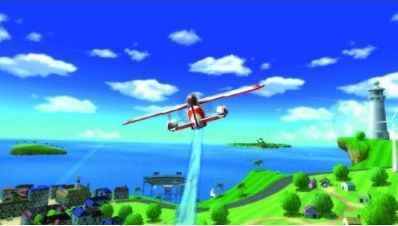Opinion: Developers have a lot to learn about using the Nintendo 3DS tech
Let's not go the way of the film industry, please

Like a lot of people, I was taken aback when I first beheld the Nintendo 3DS's stereoscopic abilities.
But having now played through every launch game available for the new handheld, I'm not so impressed with how this technology has been put to use.
Apart from the AR games that come built into the console, not a single launch game uses the technology in exciting or innovative ways. Pretty much every developer, including Nintendo, has simply made the world pop out a bit.
Lights, 3D Camera, ActionThe situation echoes how the film industry has taken to its newfound 3D technology. The first film I saw using RealD circular polarisation - as opposed to cardboard frames with red and green lenses - was James Cameron's Avatar.
The effects were stunning. It was clear that serious effort had gone into imbuing the environments with depth.
For a short while afterwards, I was a great supporter of this new technology, and couldn't wait to see what else could be done with it. Unfortunately, the film industry had other ideas.
Avatar was followed by dozens of films with poorly implemented and entirely pointless 3D. The Green Hornet, for example, would have been better suited to the traditionl two dimensions - the extra one adds nothing to the action.
Even animated films such as Ice Age 2 have used the technology poorly.
Hit the '3D' buttonNintendo's 3DS is in danger of going down the same road, with stereoscopic 3D becoming a gimmick rather than a genuinely innovative step.
Games such as Steel Diver and Rabbids 3D give the sense that there's something going on behind the foreground action, but this is never explored fully.
If there are extra levels of depth to these 2D experiences, why not let us interact with them? Why not explore what can be done with this trick of the eyes?
For example, in Rabbids 3D we occasionally catch glimpses of exciting scenes behind the main action - in fact, these are usually more exciting than the gameplay. Why not let us dip into other planes and explore multiple levels of depth?
Just because it's a 2D platformer, that doesn't mean we have to stick to one plane. Now that we're being given a sense of action in the background, why not let us interact with it too?
Instead, developers seem to be ticking a figurative 'make 3D' box and leaving it there.
The 3DS has a 3D camera, and yet not a single launch game makes use of it. Nor do any upcoming games appear to use it (apart from Nintendogs, which employs the standard AR card functions).
Imagine a fighting game that takes place on your desk using supplied AR cards. Or how about an entire 3D platforming game, where the levels sprout forth from your kitchen table?
Why are these angles not being explored already? Pretty much every game we've seen released on the 3DS up to now would have been basically the same in 2D, if less visually interesting.
While we're undeniably excited to see classic Nintendo titles remade in 3D, the fact that the gameplay experiences have already been established in 2D and are unlikely to deviate much from their original forms is a troubling sign. Put simply, we've already played those games.
The key selling point of the 3DS is a feature that's superficial by definition, and a console selling itself on its graphics is unlikely to revolutionise the industry or set charts alight. To make the most of the 3DS, developers need to start looking for an extra gameplay dimension to go with their extra visual dimension.
Otherwise, it's doomed to a future with the slider down.
